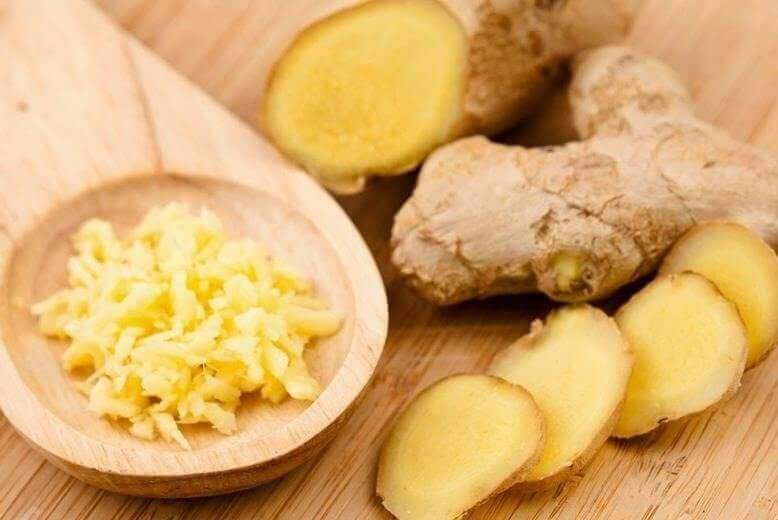3 Natural Remedies to Treat Low Back Pain


Reviewed and approved by the doctor Leonardo Biolatto
Low back injuries can cause intense pain in the back and waist, though it can also be felt in the muscles and glutes. They’re usually caused by poor posture or muscle injury. To treat low back pain, it’s important to be patient and consistent.
Oftentimes back pain occurs after a fall or a strong blow to the back. However, it can also be caused by being in poor shape when working out, lifting heavy weights, or bad posture.
Types of low back pain

In order to properly treat back pain, it’s important to understand the symptoms. Two of the most common types of back pain are:
Acute low back pain
This is characterized by pain that starts after a sudden movement or poor posture. Notably, acute pain should go away on its own after three or four days.
Chronic low back pain
On the other hand, if you experience frequent back pain that lasts longer than twelve weeks, you might have a chronic issue. It is estimated that about 20% of all low back pain cases are chronic, and they are regularly associated with pregnancy, obesity, arthritis, and stress. Interestingly, women are most at risk for chronic back pain.
Correcting bad posture and avoiding situations that could further injure your back are two simple ways to treat back pain. However, while these may be the first steps in healing, you might also look into physiotherapy, acupuncture, or massage therapy.
Read more: 3 Healthy Habits to Prevent Lower Back Pain
3 natural remedies for back pain
White willow bark
White willow bark is an anti-inflammatory and can help alleviate fever symptoms. Because of this, it’s often recommended for colds and flu. Additionally, white willow bark is a pain reliever and works especially well on joints. Thus, it’s very useful for healing low back pain.
White willow bark herbal teas can be consumed up to three times a day, preferably with other plants that can increase its medicinal properties and improve its taste. We recommend using yarrow, mint, viburnum, and horsetail.
Ginger

Ginger is well-known for its powerful anti-inflammatory properties, which makes it one of the best natural remedies for treating low back pain. You can drink ginger in a tea or apply it directly to the injured area as an ointment or with a compress.
For herbal infusions, mix two tablespoons of ginger with half a liter of water. Once ready, you can drink the beverage or use it to wet some gauze and apply it to the injury.
Furthermore, ginger is popular for its relaxing side-effects that help with swelling and pain, which is why it makes a great massage oil. To make this, mix five drops of ginger essential oil with ten drops of almond oil. Then, apply directly to the injured area and massage lightly.
You might like: Ginger and Olive Oil Syrup to Relieve Pain
Devil’s claw
Studies show that devil’s claw can reduce short-term back pain and the need to take pharmaceutical pain medication. However, it’s important to note that you should use devil’s claw over at least two to three months in order to feel lasting effects in treating low back pain.
The herb is anti-inflammatory, analgesic, and antispasmodic. Because of its analgesic properties, its use is recommended to treat painful or inflamed bone tissue and tendons. You can find capsules of devil’s claw tuber in 450-500mg doses.
Devil’s claw can also prevent spasms. Because of this, people also use it to treat digestive issues like gas, lack of appetite, or abdominal distension.
How to keep pain from coming back

One of the best ways to prevent back pain is to avoid stress and anxiety. Indeed, stress has harmful effects on the body and is one of the leading causes of muscle tension that result in pain and discomfort.
Therefore, when you feel tightness in your lumbar area, sit down on a chair and bend forward to lay your midriff on top of your thighs. Stay in this position for a few seconds. You should feel your lumbar stretch.
Additionally, drinking herbal teas with lemon and lavender will also help calm your nerves and relieve muscle tension. Of course, physiotherapy, rehabilitative exercises, acupuncture, and relaxation and mindfulness practices like yoga, tai chi, and meditation are all effective ways to both treat and prevent low back pain.
Conclusion
To prevent back pain and have a healthy back, remember to exercise regularly, stretch, and try to maintain a healthy weight. And finally, check your posture.
All cited sources were thoroughly reviewed by our team to ensure their quality, reliability, currency, and validity. The bibliography of this article was considered reliable and of academic or scientific accuracy.
- Buka, A. J. (1934). Lumbago. The American Journal of Surgery. https://doi.org/10.1016/S0002-9610(34)90179-3
- Da Silva, A. G., De Sousa, C. P. G., Koehler, J., Fontana, J., Christo, A. G., & Guedes-Bruni, R. R. (2010). Evaluation of an extract of Brazilian arnica (Solidago chilensis Meyen, Asteraceae) in treating lumbago. Phytotherapy Research. https://doi.org/10.1002/ptr.2934
- Dissanayake, Kankanam Gamage Chithramala, W. A. L. C. Waliwita, and R. P. Liyanage. “A review on medicinal uses of Zingiber officinale (ginger).” International Journal of Health Sciences and Research 10.6 (2020): 142-148.
- Dunford E, DClinPsy MT. Relaxation and Mindfulness in Pain: A Review. Rev Pain. 2010;4(1):18–22. doi:10.1177/204946371000400105
- Gagnier, J. J., Chrubasik, S., & Manheimer, E. (2004). Harpgophytum procumbens for osteoarthritis and low back pain: a systematic review. BMC complementary and alternative medicine, 4, 13. https://doi.org/10.1186/1472-6882-4-13
- Mauro, G. L., Martorana, U., Cataldo, P., Brancato, G., & Letizia, G. (2000). Vitamin B12 in low back pain: a randomised, double-blind, placebo-controlled study. European Review for Medical and Pharmacological Sciences.
- Shara, Mohd, and Sidney J. Stohs. “Efficacy and safety of white willow bark (Salix alba) extracts.” Phytotherapy Research 29.8 (2015): 1112-1116.
This text is provided for informational purposes only and does not replace consultation with a professional. If in doubt, consult your specialist.








